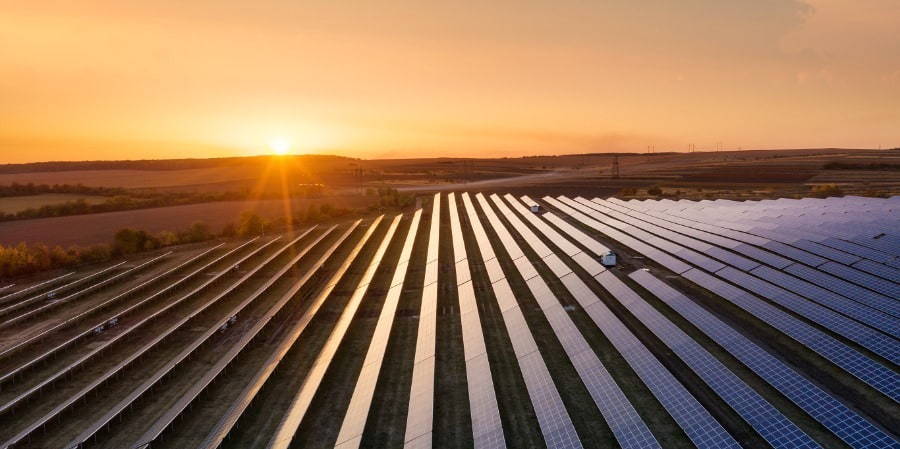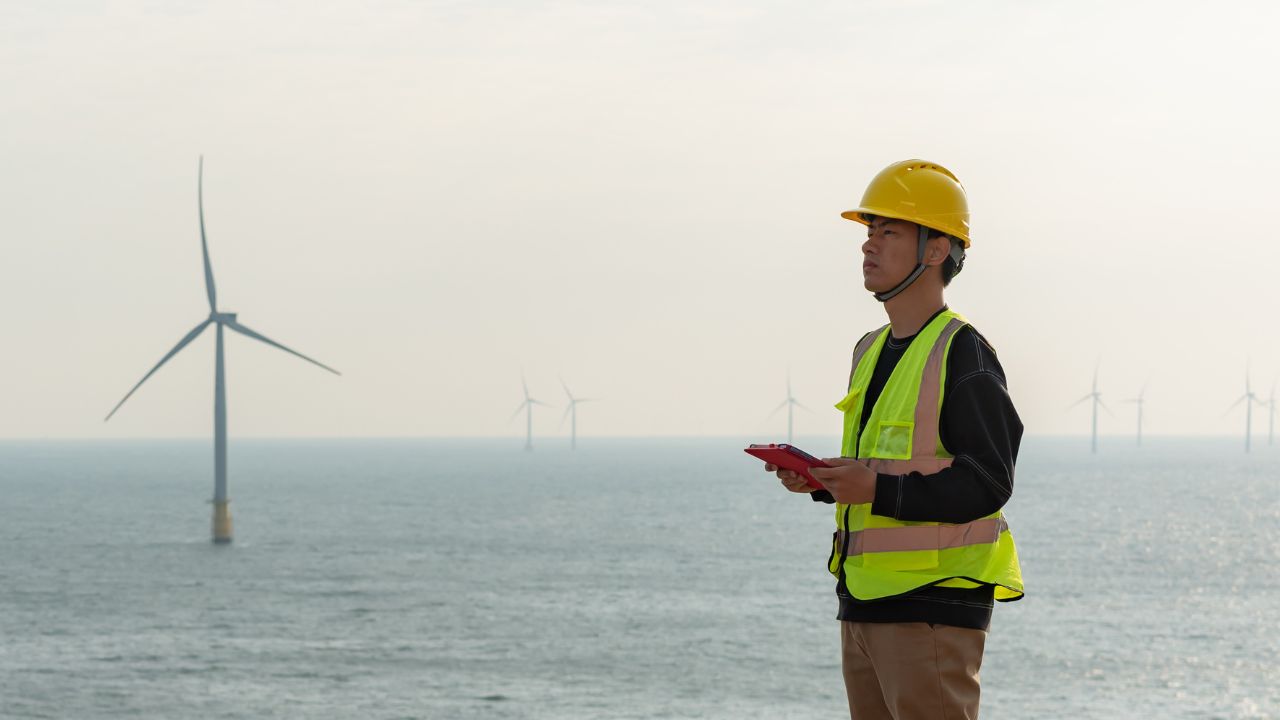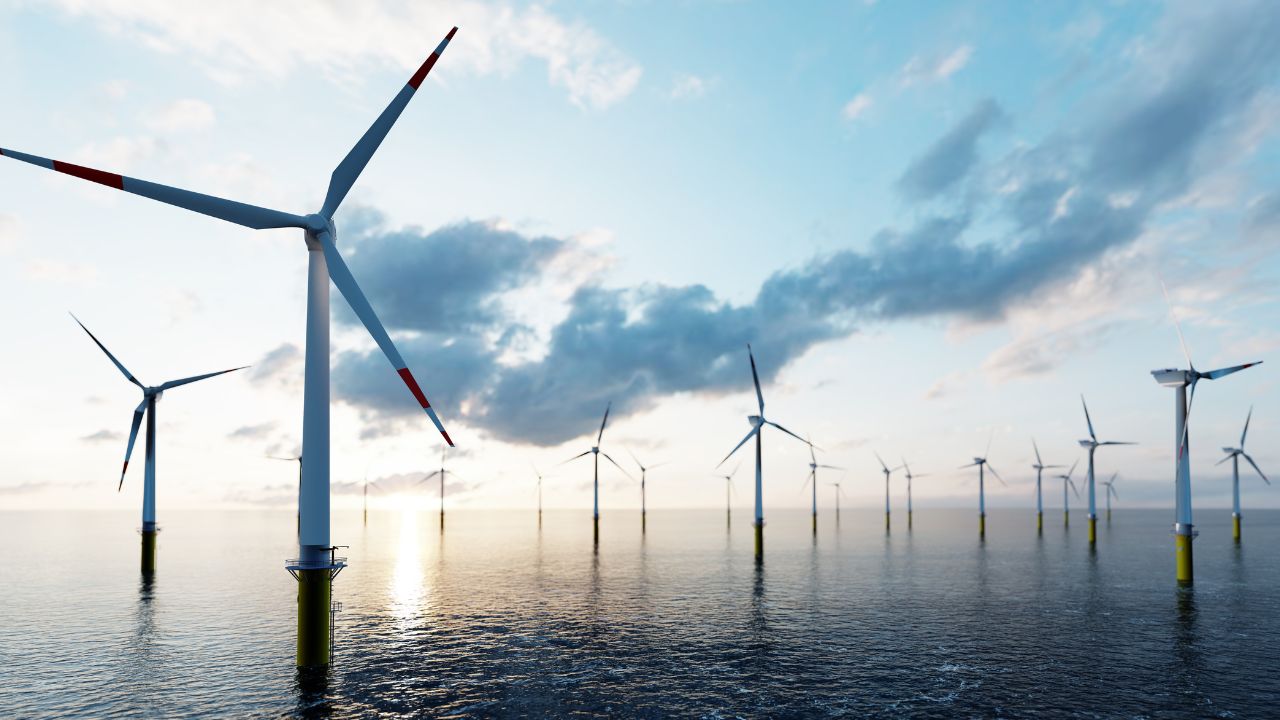
5 USA Renewable Energy Projects You Need To Know About
04 Nov, 20205:30For the last several months we have heard a lot of promises, speculation and forecasts about...

For the last several months we have heard a lot of promises, speculation and forecasts about the USA’s future and, as always, energy has been near the top of the agenda.
For a country so heavily dependent on oil and gas both as a consumer and producer, the topic of clean energy vs a well-established industry that drives a huge segment of the nation’s economy drives passionate debate on both sides.
And yet as we wait to find out whose policies will be affecting both the oil and the renewables industries for the next four years (at the time of publication the Trump/Biden 2020 election has yet to be decided), we can already see glimpses of a shift in the United States’ energy mix.
Despite the last four years of President Trump, despite the ceremonious rejection of the Paris agreement, despite the promises and support offered to big oil, could the winds of change be coming for America’s energy sector? Could renewable energy really be a major source of US power?
Policy follows industry and the industry is speaking loudly. Earlier this week energy analysts Rystad revised their predictions for “peak oil” - the moment that oil production will cease to increase globally and enter a terminal decline. According to the firm that time will come in 2028 with a global peak of 102 million barrels per day (bpd), after which the North American production will decline from 25bpd to just 12bpd by 2050.
Meanwhile wind power is taking off, with 2020 set to be a record year according to the American Wind Energy Association (AWEA), despite disruptions caused by the Covid-19 pandemic.
In just Q3 of 2020 alone, ten new wind farms began operations with a combined capacity of 1,294MW. In the first nine months of the year 6,309MW of operational wind power capacity was installed - an increase of 72% from the previous year. This brings the USA’s total operational wind power capacity to 111,808MW.
And the year is not yet over, with further commissioning activity still expected in what is traditionally the busiest quarter of the year for US wind farm installation activity. AWEA are expecting a record year for installations, beating the 13.3GW installed in 2012.
So what does the future hold? Well if Biden wins the few remaining states left to declare then we can certainly expect a greater push for renewable energy in the next four years, giving a greater boost to the industry’s prospects.
But even if Trump’s premature victory declaration is somehow proved correct, it may be too late for even the most steadfast big oil proponents to rely on a fossil fuel future. If 2020 can be a record year for wind power installation, then there is seemingly nothing that can stop the renewable wave from taking over.
The wind power projects you need to know about
So where are the main wind power hubs in America? Where will the most wind energy jobs be created in the coming years and at what scale? Right now there are over 400 upcoming onshore and offshore wind farms across the United States in various stages of planning.
Some have had contracts awarded already (around 163), some have just received government approval (81) and some are still in the early planning stages (109). But all 400 are currently active projects that are set to be creating thousands of renewable energy jobs for the next few years.
400 is too many to list all at once, so we’re simply going to take the five biggest, by capex. These five wind projects will all operate at a massive scale, together adding $23 billion to this industry and creating hundreds of direct and indirect jobs in their respective states, as well as securing clean, renewable energy for local people for decades to come.
1. Kitty Hawk Offshore Wind Farm
Location: North Carolina
Cost: $6 billion
A 122,405 acre offshore wind farm is being planned for an area 39 nautical kilometres off the coast of Kitty Hawk, North Carolina. Avangrid Renewables are leading the project, having been awarded the development area by the US Bureau of Ocean Energy Management in March 2017. The site will be the largest wind energy development on the US east coast.
The area is ideal for such a farm, with wind speeds averaging 32kmph approximately 80m above the ocean’s surface - strong and reliant enough to provide 3MW per km2.
Avangrid hope to be able to generate 2.5GW of power from the site, which it will use primarily to supply North Carolina, South Carolina and Virginia with power. The project is still in the planning stages but it is hoped that they can begin selling power to the nearby states by 2030.
2. Texas Mariah Onshore Wind Farm
Location: Texas
Cost: $5 billion
Texas may not have turned blue this time, but it is clear that the state is no longer the traditional, oil-dependent area that it once was. In fact Texas is home to a number of major renewable energy projects, with the Mariah Onshore Wind Farm set to be the largest for the foreseeable future.
The proposed 10,000 MW wind farm will be spread across the Parmer, Sherman and Dallam counties and will tie in to the proposed Tres Amigas SuperStation.
The project turbine locations have some of the best US onshore wind resource at a height of 137m. Leases are signed with landowners in rural Dallam, Parmer and Sherman Counties. In Parmer County, 255,000 acres (1,032 sq km) are under project lease. In Dallam and Sherman Counties, another 210,000 acres (849.8 sq km) is available.
The first 600MW of the project has been completed and sold.
1. Mariah North Wind Farm (230MW) – completed in Nov 2016: First Reserve
2. Mariah South Wind Farm (370MW) – completed in March 2017: Brightman Energy
The project is still under development, with Scandia Wind actively engaging investors to push it towards a construction and completion date, with 2022 earmarked for a startup.
3. Chokecherry Sierra Madre Onshore Wind Farm
Location: Wyoming
Cost: $5 billion
A 3,000MW onshore wind farm located on approximately 2,000 acres in Carbon County, Wyoming is being planned by the Power Company of Wyoming LLC.
The project is the largest proposed wind farm in North America, and requires underground electric gathering lines, an overhead transmission line and substations. The project, as currently configured, avoids critical sage-grouse habitat identified as “Sage-Grouse Core Areas.”
PCW proposes to build the project in two 500-turbine phases with construction spanning about eight years. The proponent aims to export electricity to utility customers in California, Arizona and Nevada.
Construction began in 2017 but paused last year due to poor ground conditions. It is understood that work resumed in May 2020. The entire project is expected to employ 1,200 workers at peak construction and more than 100 permanent operations and maintenance staff.
4. Green Energy Initiative Project
Location: Wyoming
Cost: $4 billion
Pathfinder Renewable Wind Energy are undertaking development of a 2.1GW wind farm near Chugwater in Platte County, Wyoming; approximately 64km north of Cheyenne. The wind farm is a part of the proposed Green Energy Initiative to bring clean energy to Los Angeles by 2023. It also includes an energy storage facility in Utah and an 845km transmission line.
The proposed US$8bn Green Energy Initiative aims to bring large amounts of renewable power to Los Angeles, California. The project will generate 9.2 million megawatt-hours per year and comprises a 2.1GW wind farm, a compressed air energy storage facility, and a 845km transmission line.
So far it is still in the early development phase with few details disclosed. It is currently scheduled for completion in 2023.
5. Empire Wind Offshore Wind Project
Location: New York
Cost: $3 billion
Formerly known as the Long Island - New York City Offshore Wind Project, this 816MW offshore wind farm is planned for construction approximately 24km off the coast of Long Island.
The project will feature between 60 and 80 turbines of 10MW or more in individual capacity. Original plans go back as far as 2009 but have been ramping up in recent month with Equinor recently acquiring a 50% stake from BP worth $1.1 billion, to be finalised in early 2021.
Equinor followed the acquisition in October with the submission of two bids as part of New York's up to 2.5GW offshore wind solicitation. The bids cover the Beacon Wind project as well as Empire Wind Phase 2. It is understood that the developer is planning to make use of the South Brooklyn Marine Terminal for construction activities and its operations and maintenance (O&M) base.
The proposals include plans for manufacturing offshore wind components at the Port of Coeymans and the Port of Albany. The Empire Wind Phase 2 development will be tracked in a separate project and is assumed to be able to host the remaining capacity of the lease area of approx. 1,184MW.
Work in the USA’s renewable energy industry
NES Fircroft’s dedicated US-based teams can help you secure your next job in the fast growing renewable energy industry. Register your CV with us today.









